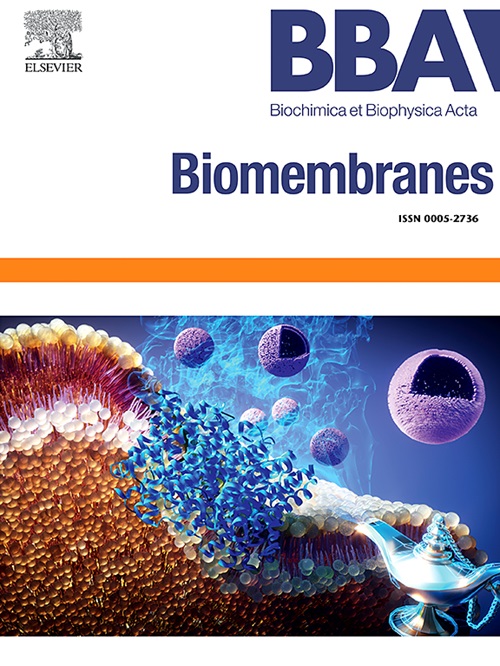Lock and key: Quest to find the most compatible membrane mimetic for studying membrane proteins in native environment
IF 2.5
3区 生物学
Q3 BIOCHEMISTRY & MOLECULAR BIOLOGY
引用次数: 0
Abstract
Membrane proteins play crucial roles in cellular signal transduction, molecule transport, host-pathogen interactions, and metabolic processes. However, mutations, changes in membrane properties, and environmental factors can lead to loss of protein function. This results in impaired ligand binding and misfolded structures that prevent proteins from adopting their native conformation. Many membrane proteins are also therapeutic targets in various diseases, where drugs can either restore or inhibit their specific functions. Understanding membrane protein structure and function is vital for advancing cell biology and physiology. Experimental studies often involve extracting proteins from their native environments and reconstituting them in membrane mimetics like detergents, bicelles, amphipols, nanodiscs, and liposomes. These mimetics replicate aspects of native membranes, aiding in the study of protein behavior outside living cells. Scientists continuously explore new, more native-like membrane mimetics to improve experimental accuracy. This dynamic field involves evaluating the advantages and disadvantages of different mimetics and optimizing the reconstitution process to better mimic natural conditions.

锁和钥匙:寻找最兼容的膜模拟物来研究天然环境中的膜蛋白。
膜蛋白在细胞信号转导、分子运输、宿主-病原体相互作用和代谢过程中起着至关重要的作用。然而,突变、膜特性的改变和环境因素可导致蛋白质功能的丧失。这导致配体结合受损和错误折叠结构,阻止蛋白质采用其天然构象。许多膜蛋白也是各种疾病的治疗靶点,药物可以恢复或抑制其特定功能。了解膜蛋白的结构和功能对推进细胞生物学和生理学至关重要。实验研究通常涉及从天然环境中提取蛋白质,并将其重组为膜模拟物,如洗涤剂、双胞体、双极体、纳米圆盘和脂质体。这些模拟物复制了天然膜的各个方面,有助于研究活细胞外的蛋白质行为。科学家们不断探索新的、更像天然膜的模拟物,以提高实验的准确性。这一动态领域涉及评估不同模拟物的优点和缺点,并优化重构过程以更好地模拟自然条件。
本文章由计算机程序翻译,如有差异,请以英文原文为准。
求助全文
约1分钟内获得全文
求助全文
来源期刊

Biochimica et biophysica acta. Biomembranes
生物-生化与分子生物学
CiteScore
8.20
自引率
5.90%
发文量
175
审稿时长
2.3 months
期刊介绍:
BBA Biomembranes has its main focus on membrane structure, function and biomolecular organization, membrane proteins, receptors, channels and anchors, fluidity and composition, model membranes and liposomes, membrane surface studies and ligand interactions, transport studies, and membrane dynamics.
 求助内容:
求助内容: 应助结果提醒方式:
应助结果提醒方式:


